Prefoldin 2 contributes to mitochondrial morphology and function
- PMID: 37697385
- PMCID: PMC10496292
- DOI: 10.1186/s12915-023-01695-y
Prefoldin 2 contributes to mitochondrial morphology and function
Abstract
Background: Prefoldin is an evolutionarily conserved co-chaperone of the tailless complex polypeptide 1 ring complex (TRiC)/chaperonin containing tailless complex 1 (CCT). The prefoldin complex consists of six subunits that are known to transfer newly produced cytoskeletal proteins to TRiC/CCT for folding polypeptides. Prefoldin function was recently linked to the maintenance of protein homeostasis, suggesting a more general function of the co-chaperone during cellular stress conditions. Prefoldin acts in an adenosine triphosphate (ATP)-independent manner, making it a suitable candidate to operate during stress conditions, such as mitochondrial dysfunction. Mitochondrial function depends on the production of mitochondrial proteins in the cytosol. Mechanisms that sustain cytosolic protein homeostasis are vital for the quality control of proteins destined for the organelle and such mechanisms among others include chaperones.
Results: We analyzed consequences of the loss of prefoldin subunits on the cell proliferation and survival of Saccharomyces cerevisiae upon exposure to various cellular stress conditions. We found that prefoldin subunits support cell growth under heat stress. Moreover, prefoldin facilitates the growth of cells under respiratory growth conditions. We showed that mitochondrial morphology and abundance of some respiratory chain complexes was supported by the prefoldin 2 (Pfd2/Gim4) subunit. We also found that Pfd2 interacts with Tom70, a receptor of mitochondrial precursor proteins that are targeted into mitochondria.
Conclusions: Our findings link the cytosolic prefoldin complex to mitochondrial function. Loss of the prefoldin complex subunit Pfd2 results in adaptive cellular responses on the proteome level under physiological conditions suggesting a continuous need of Pfd2 for maintenance of cellular homeostasis. Within this framework, Pfd2 might support mitochondrial function directly as part of the cytosolic quality control system of mitochondrial proteins or indirectly as a component of the protein homeostasis network.
Keywords: Chaperone; Mitochondria; Pfd2/Gim4; Prefoldin; Proteostasis; Tom70.
© 2023. BioMed Central Ltd., part of Springer Nature.
Conflict of interest statement
The authors declare that they have no competing interests.
Figures

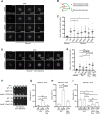
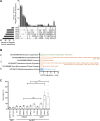
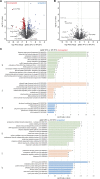
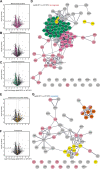
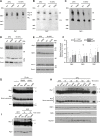
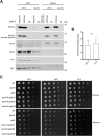
Similar articles
-
Prefoldin Function in Cellular Protein Homeostasis and Human Diseases.Front Cell Dev Biol. 2022 Jan 17;9:816214. doi: 10.3389/fcell.2021.816214. eCollection 2021. Front Cell Dev Biol. 2022. PMID: 35111762 Free PMC article. Review.
-
The Chaperonin TRiC/CCT Associates with Prefoldin through a Conserved Electrostatic Interface Essential for Cellular Proteostasis.Cell. 2019 Apr 18;177(3):751-765.e15. doi: 10.1016/j.cell.2019.03.012. Epub 2019 Apr 4. Cell. 2019. PMID: 30955883 Free PMC article.
-
Identification of a Non-canonical Function of Prefoldin Subunit 5 in Proteasome Assembly.J Mol Biol. 2024 Dec 1;436(23):168838. doi: 10.1016/j.jmb.2024.168838. Epub 2024 Oct 26. J Mol Biol. 2024. PMID: 39490918
-
The prefoldin complex stabilizes the von Hippel-Lindau protein against aggregation and degradation.PLoS Genet. 2020 Nov 2;16(11):e1009183. doi: 10.1371/journal.pgen.1009183. eCollection 2020 Nov. PLoS Genet. 2020. PMID: 33137104 Free PMC article.
-
Prefoldin, a jellyfish-like molecular chaperone: functional cooperation with a group II chaperonin and beyond.Biophys Rev. 2018 Apr;10(2):339-345. doi: 10.1007/s12551-018-0400-0. Epub 2018 Feb 9. Biophys Rev. 2018. PMID: 29427249 Free PMC article. Review.
Cited by
-
Decoding interaction between mitochondria and endoplasmic reticulum in ischemic myocardial injury: targeting natural medicines.Front Pharmacol. 2025 Feb 28;16:1536773. doi: 10.3389/fphar.2025.1536773. eCollection 2025. Front Pharmacol. 2025. PMID: 40093324 Free PMC article. Review.
-
Mitochondria and myocardial ischemia/reperfusion injury: Effects of Chinese herbal medicine and the underlying mechanisms.J Pharm Anal. 2025 Feb;15(2):101051. doi: 10.1016/j.jpha.2024.101051. Epub 2024 Jul 23. J Pharm Anal. 2025. PMID: 39931135 Free PMC article. Review.
References
-
- Hartl FU, Hayer-Hartl M. Molecular chaperones in the cytosol: from nascent chain to folded protein. Science. 2002;295(5561):1852–1858. - PubMed
Publication types
MeSH terms
Substances
LinkOut - more resources
Full Text Sources
Molecular Biology Databases

